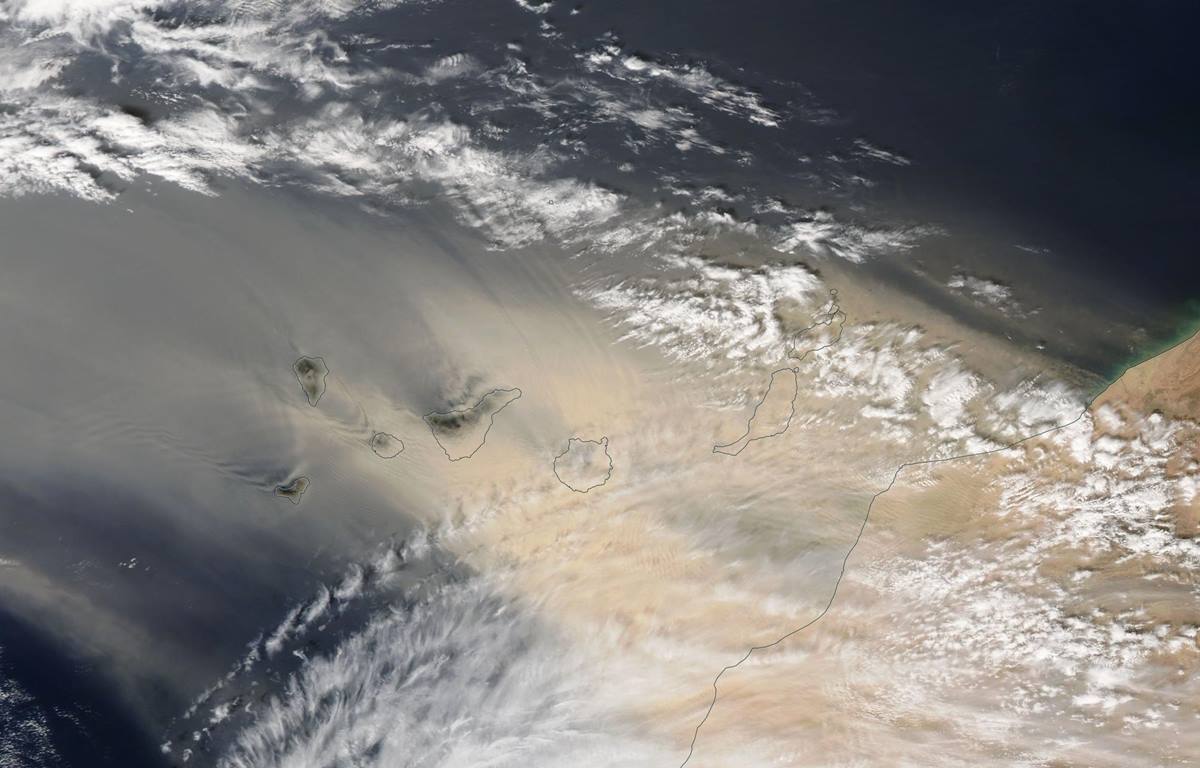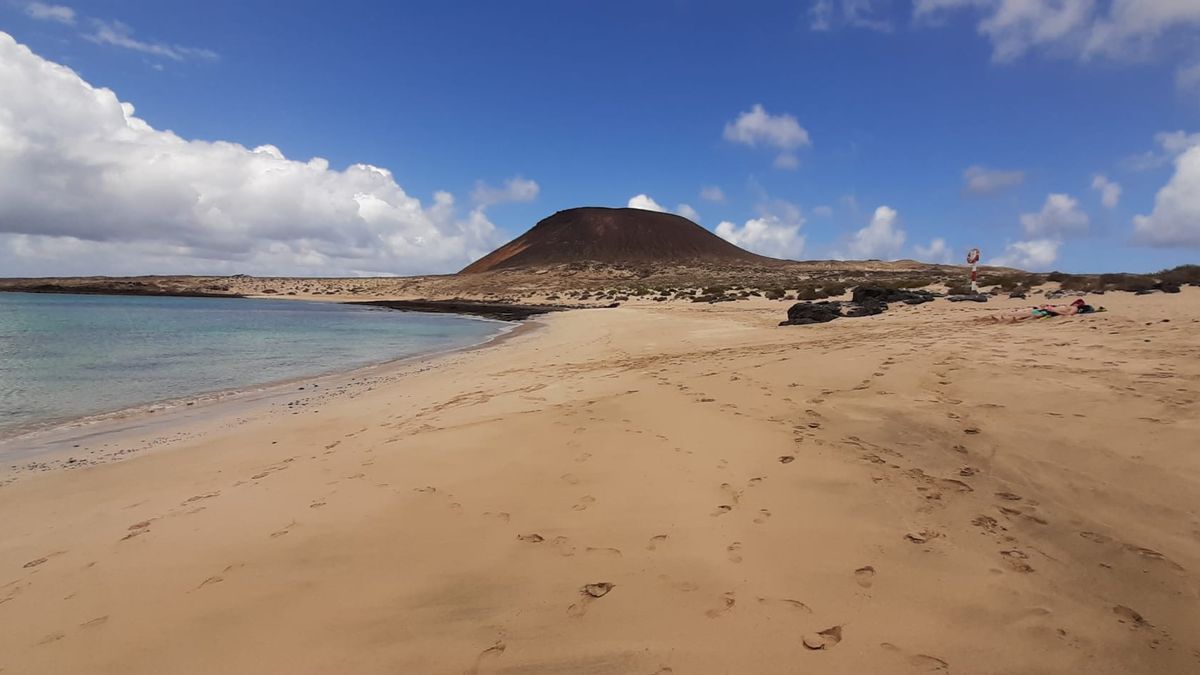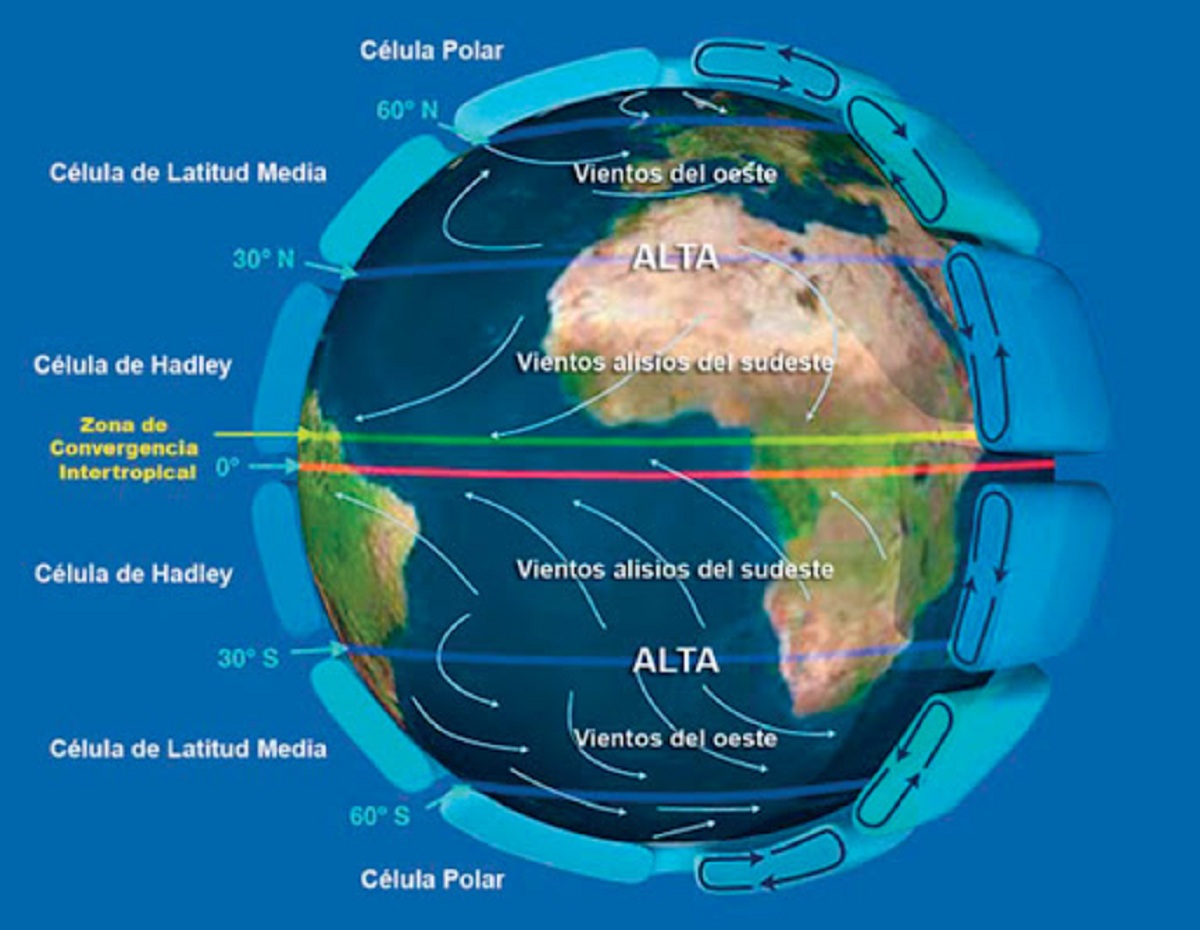
One of the aspects of atmospheric dynamics is the trade winds. They have been of great importance, especially since the XNUMXth century thanks to the fact that it had a great influence on the navigation of sailing ships. However, not many people know What are the trade winds. At present, there are still many who are encouraged to navigate thanks to the trade winds since they are those that take place between Ecuador and the tropics. They blow from the northern hemisphere and from the southern hemisphere and are in the well-known Intertropical convergence zone.
In this article we are going to tell you what the trade winds are, what are their characteristics and importance.
What are the trade winds
Trade winds are wind currents that blow almost continuously in summer in the Northern Hemisphere and are more irregular in winter. Its influence occurs between the equator and the tropics, and the north-south latitude reaches approximately 30º. They are moderately strong winds, with an average wind speed of about 20 km / h.
Due to their non-destructive power and their apparent stability during the summer, they have a historical significance because they allow the existence of important maritime trade routes. In addition, they are also responsible for making it possible to cross the Atlantic Ocean by sailing to the United States. The first to create a detailed map of the trade winds and monsoons was Edmund Halley, who published the map in 1686 in a study that used data from British commercial sailors.
The trade winds blow from NE (northeast) in the northern hemisphere to SW (southwest) at the top of the earth, and blow from SE (southeast) to NW (northwest) at the bottom of the earth, that is, in the southern hemisphere. Its direction of inclination is due to the Coriolis effect, which causes the rotation of the earth to affect moving objects and modify their movement differently depending on the hemisphere in which they are.
Trade wind formation
The origin of the trade winds lies in how the sun's rays heat different parts of the earth in different ways. The trade winds formation process is summarized below:
- Because the sun's rays have a greater impact during a full impact, that is, vertically, the Earth's equator receives more heat, than is the cause of global warming. As for the trade winds, when the sun's heat falls on the land and waters of the equatorial region, the heat will eventually return to the surface air in large amounts, thereby overheating. This air expands and loses density when heated, becomes lighter, and rises.
- As the hot air rises, cold air from the tropics will fill the void.
- In contrast, hot air that rises near the equator moves toward a latitude of 30º, regardless of the hemisphere in which it is located.
- By the time it reaches this point, most of the air has cooled enough to drop to surface level, forming a closed loop called a Hadley battery.
- However, not all the air will cool down again. A piece is heated again and flows towards the Ferrer battery located between 30º and 60º of latitude, and continues advancing towards the poles.
- The Coriolis effect is the cause that these winds do not blow vertically but obliquely, and the reason why your perception in the two hemispheres is partially reversed.
Also, the meeting point of the trade winds of the two hemispheres, or the small area between them, is called ITCZ, the tropical convergence zone. This area is very important for boaters because it has low pressure and many updrafts. Intermittent heavy rains are very common and their exact location is constantly changing with the evolution of the air mass.
Where they are
As we have mentioned before, the trade winds are generated throughout the territory, including the area between the equator and 30 degrees north latitude. This has affected many countries. The Canary Islands have trade winds, partly due to the climate of these Spanish islands. In winter, they were hardly affected by the stabilizing effects of the anticyclone in the Azores. Its location near the Tropic of Cancer and its geographical characteristics give it a dry subtropical climate in summerAlthough distant, it is similar to the Mediterranean Sea.
They also have important influences in countries such as Venezuela, Chile, Colombia, Ecuador or Costa Rica, all of which come from tropical regions and have complex climates that cause the entry of trade winds. These vary significantly according to geographic regions and specific seasons.
Keep in mind that although the trade winds and monsoons are closely related, they are far from the same and should not be confused. Trade winds are mild and fairly constant strong winds, while monsoons are winds with strong seasonal storms that emit large amounts of precipitation.
Azores anticyclone
The anticyclone in the Azores has been given that name for a reason. This is because it plays a role mainly in the Atlantic region where this other archipelago is located, that is, the Azores. Depending on the anticyclone displacement, the indirect impact of the trade winds in the Canary Islands may be greater or lesser.
In winter, this anticyclone is very close to the Canary Islands. This leads to greater stability and less trade winds. Therefore, the cold air has little effect on the islands. This is one of the basic factors to maintain a pleasant and warm climate in the colder season.
In summer, the anticyclone migrates over the Azores. The further away from the Canary Islands, the greater the impact of the trade winds. Therefore, the summer trade winds blow more, so the temperature will not skyrocket.
I hope that with this information you can learn more about what are the trade winds and lower their characteristics.


